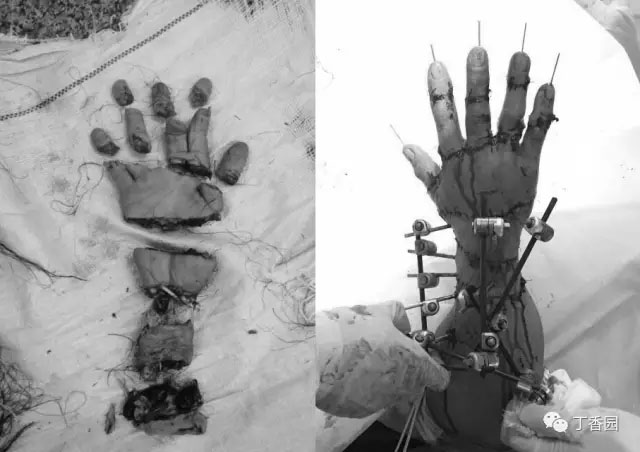Some time ago, a case in the garden caused widespread discussion. It is reported that the case was a replantation of a limb in the 89 hospital of the Chinese People's Liberation Army, which lasted 17 hours, and all of the 6 segments and 9 segments were all alive. Broken limb (referring to) replantation surgery is not a myth Colleagues familiar with the development of trauma medicine may know that as early as 1963, China’s Academician Chen Zhongwei first reported the case of replantation of severed limbs, and in 1965, successfully replanted the severed fingers, and then the technique of replanting the limbs was widely recognized and Promote the application. With the introduction and improvement of microsurgical technology, the technical level of replantation of broken limbs in China is the world leader. As of 1984, according to statistics from Academician Chen Zhongwei, the total survival rate of replanted limbs in the country was 83.9%. In 1986, there were reports of replantation of 10 fingers and complete survival. The successful replantation of multiple segments of the fingers was reported in 1989. It can be seen that the surgery in the above example is not very surprising in the eyes of China's outstanding hand surgeons. Where does China's good technology come from? So why is China's broken limb (referred to) replanting technology so good? First of all, everyone will think of a large population base. Once the technique of replantation of broken fingers has been carried out, the technology has been studied from the top three to the village health center. As of 2003, more than 60,000 cases of replanted limbs were replanted nationwide, compared with only 2% of hospitals in the United States who are willing to replant their fingers, and each hospital has an average of more than 10 units per year. A lot of training has certainly improved the technical level of our country. On the other hand, the influence of the traditional culture of "body's body, the parents, the filial piety, and the filial piety." Compared with the restoration of function, some patients care more about the integrity of the shape. Our doctors also pursue "The beauty of surgery" relaxes the indications for replantation of the broken limbs. Preoperative assessment of limb replantation (referring to) replantation: Protecting patients' lives is a priority. In the case of other damages, first solve the life-threatening problem and then consider the replantation of the limbs to avoid interference. Because of the older age, heavier trauma and other reasons, patients with poor surgical tolerance, even if surgery, strengthen the monitoring to ensure safety. Isolation time of the limb. Fingers are more tolerant to ischemia, but the shorter the time to establish blood supply, the better the survival and functional recovery. Too long ischemic time can cause irreversible changes in the limbs, especially muscle tissue, and may even cause serious complications after replantation to restore blood supply. Judgment of the break. Sharp cut injury is a good condition for replantation, while the relative prognosis of avulsion injury and blast injury with severe soft tissue injury is not so good. Replantation of multiple fracture planes is more difficult to restore function than single plane disconnection. The disconnected part should also be considered. For example, the indication that the proximal segment is a relatively contraindication to replanting, so as to avoid the non-functional finger, but affects the grasping function. Laboratory Spectrophotometer,Spectrophotometer Principle,Lab Spectrophotometry,Flame Spectrophotometer For Lab Guangdong Widinlsa International Co.Ltd , https://www.guangdongwidinlsa.com
Chinese doctors push the technique of replanting limbs to the world altar